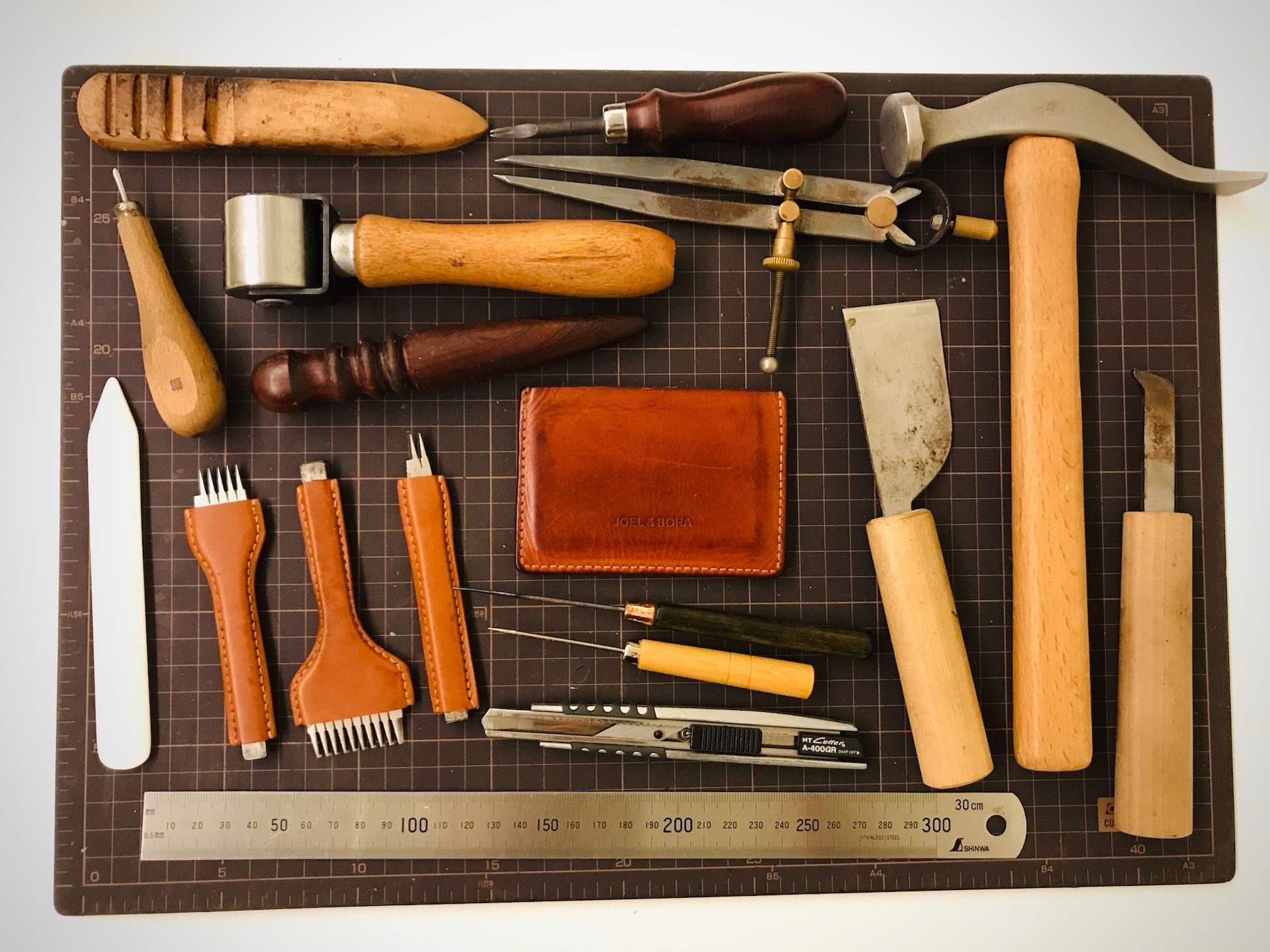The leather industry is a significant contributor to the global economy, generating billions of dollars in revenue each year. However, the industry is not without its challenges, particularly in pricing and profitability.
Leather manufacturers face a wide range of factors that affect the pricing of their products, including raw material costs, labor costs, tanning and processing costs, market demand, and competition.
To maintain profitability, leather manufacturers must develop effective pricing strategies, reduce costs, diversify their product lines, and invest in technology and innovation.
This article will explore these pricing and profitability strategies in greater detail and discuss the challenges and opportunities facing the leather industry today.
Let's take a look at the table of content that we'll discuss in this comprehensive guide:
- Leather Pricing and Profitability Strategies: A Brief Overview
- Meaning of Leather Pricing and Profitability
- Significance of Leather Pricing and Profitability
- Factors Affecting Leather Pricing
- Common Pricing Strategies for Leather Products
- Profitability Strategies for Leather Businesses
- Challenges in Leather Pricing and Profitability
- Future Outlook for the Leather Industry and Potential Opportunities for Profitability
- Wrapping Up
- How Deskera Can Assist You?
Let's get started!
Leather Pricing and Profitability Strategies: A Brief Overview
Leather pricing and profitability strategies are crucial for the success of businesses involved in the production and sale of leather products.
Furthermore, leather pricing is influenced by factors such as the cost of raw materials, labor costs, tanning and processing costs, and market demand and competition.
Common pricing strategies for leather products include cost-based pricing, value-based pricing, and competition-based pricing.
Profitability strategies for leather businesses involve reducing costs through techniques such as efficient production processes and supply chain management, diversification of product lines, investment in technology and innovation, targeting niche markets, and effective marketing and branding.
However, the leather industry also faces challenges such as fluctuations in raw material prices, labor shortages and rising wages, environmental regulations and sustainability concerns, and competition from synthetic materials.
Businesses in the leather industry must navigate these challenges while implementing effective pricing and profitability strategies to remain successful.
Meaning of Leather Pricing and Profitability
Leather pricing refers to the process of determining the cost of producing and selling leather products. This involves factoring in the cost of raw materials, labor costs, processing costs, and other expenses to arrive at a price that will generate a profit for the business.
Profitability, on the other hand, refers to the ability of a business to generate a profit from its operations. Profitability strategies are aimed at maximizing the profit margins of a business by reducing costs, increasing revenue, and optimizing the use of resources.
In the context of the leather industry, profitability strategies may involve improving production efficiency, diversifying product lines, investing in technology and innovation, targeting niche markets, and implementing effective marketing and branding strategies.
Significance of Leather Pricing and Profitability
Leather pricing and profitability are significant for the following reasons:
- Profitability: Profitability is the ultimate goal of any business, and the leather industry is no exception. Effective pricing and profitability strategies can help leather businesses maximize their profit margins and remain competitive in the market.

- Customer Satisfaction: Pricing plays a crucial role in customer satisfaction. Customers are willing to pay a premium for high-quality leather products that meet their needs and expectations. By pricing products effectively, leather businesses can improve customer loyalty and build brand loyalty.
- Market Positioning: Pricing can also influence the market position of a business. Leather businesses that price their products too high may lose customers to competitors offering similar products at lower prices. On the other hand, businesses that price their products too low may be perceived as offering low-quality products.
- Sustainability: Effective pricing and profitability strategies can also help leather businesses ensure long-term sustainability. By minimizing costs and maximizing profits, businesses can reinvest in technology and innovation, improve sustainability practices, and reduce their environmental footprint.
In summary, leather pricing and profitability are essential for the success and sustainability of leather businesses. Effective pricing strategies can help businesses remain competitive in the market, improve customer satisfaction, and achieve long-term profitability.
Furthermore, by implementing effective pricing and profitability strategies, leather businesses can improve their bottom line and ensure long-term success.
Factors Affecting Leather Pricing
The pricing of leather is affected by several factors that vary based on the type and quality of the leather. Here are some of the key factors affecting leather pricing:
Cost of Raw Materials: The cost of raw materials is another important factor that affects the pricing of leather. The primary raw material used in leather production is animal hides, which can come from various sources such as cows, pigs, goats, and sheep. The price of these raw materials can vary depending on several factors such as:
Supply and demand: The availability of animal hides can affect their price. If there is a shortage of hides, prices may increase, and vice versa.
Quality: The quality of animal hides can also affect their price. Higher quality hides, which are free from defects and have a consistent texture, are more expensive than lower quality hides.
Location: The location where the animal hides are sourced can also affect their price. Hides sourced from regions with higher labor and transportation costs may be more expensive.
Processing costs: The cost of processing the raw materials into leather can also affect the final price of the product. This includes costs such as tanning, dyeing, and finishing.
Overall, the cost of raw materials is an important factor that affects the pricing of leather. As the cost of raw materials increases, the price of the final product may also increase to compensate for the higher costs.
Labor Costs
Labor costs are another significant factor that affects the pricing of leather products. The production process of leather involves several labor-intensive steps such as harvesting, tanning, dyeing, and finishing. The cost of labor can vary based on several factors such as:
- Location: Labor costs can vary depending on the location where the leather production takes place. For example, countries with lower labor costs may have lower production costs and therefore can offer leather products at lower prices.
- Skill level: The skill level of the workers involved in the production process can also affect labor costs. Workers with specialized skills and experience may command higher wages.
- Working conditions: The working conditions of the production facilities can also affect labor costs. Workers in facilities with modern equipment and a safe working environment may command higher wages than those in facilities with outdated equipment or unsafe working conditions.
- Labor laws: Labor laws and regulations in the country or region where the production takes place can also affect labor costs. For example, countries with stronger labor laws may have higher minimum wage requirements, which can increase the cost of labor.
Consequently, labor costs are a crucial factor in the pricing of leather products. The higher the cost of labor, the higher the production cost, which can lead to higher prices for the final product.
However, investing in skilled workers, modern equipment, and safe working conditions can result in higher quality products and more efficient production processes, which can ultimately lead to more competitive pricing.
Tanning and Processing Costs
Tanning and processing costs are significant factors that affect the pricing of leather products.
Tanning refers to the process of treating raw animal hides to turn them into leather, which involves several steps such as cleaning, soaking, and treating the hides with chemicals.
Processing refers to the additional steps involved in preparing the leather for use in various products such as shoes, bags, and furniture. The cost of tanning and processing can vary based on several factors such as:
- Type of tanning: The type of tanning process used can significantly affect the cost of leather production. Some tanning methods, such as vegetable tanning, which uses natural materials, can be more expensive than other methods, such as chrome tanning, which uses synthetic chemicals.
- Quality of chemicals: The quality of the chemicals used in the tanning and processing of leather can also affect production costs. Higher quality chemicals may be more expensive but can result in a better-quality final product.
- Labor costs: The labor costs involved in the tanning and processing of leather can also be significant. These costs can include wages for workers involved in the production process, as well as overhead costs such as utilities and rent for the production facility.
- Environmental regulations: Leather production can have significant environmental impacts, and complying with environmental regulations can add to production costs. For example, regulations on the disposal of waste chemicals and water treatment can add to production costs.
Overall, tanning and processing costs are crucial factors that affect the pricing of leather products. The higher the cost of tanning and processing, the higher the production cost, which can lead to higher prices for the final product. However, investing in higher quality chemicals and complying with environmental regulations can result in a better-quality final product, which may justify the higher production costs.
Market Demand and Competition
Market demand and competition are important factors that affect the pricing of leather products.
The market demand for leather products can be influenced by several factors such as fashion trends, consumer preferences, and economic conditions. The higher the demand for leather products, the higher the price that can be charged.
Competition from other leather product manufacturers can also impact pricing, as companies may lower their prices to remain competitive.
The following are some ways market demand and competition can impact pricing:
- Supply and demand: When demand for leather products is high, and the supply of leather is low, the price of leather products may increase due to the scarcity of supply. Conversely, if the demand for leather products is low, and the supply is high, the price of leather products may decrease.
- Product differentiation: Companies may differentiate their leather products to make them stand out from competitors. Unique designs, high-quality materials, and other features can help justify a higher price.
- Price competition: Leather product manufacturers may engage in price competition to capture market share. If competitors lower their prices, a company may need to lower its prices to remain competitive.
- Economic conditions: Economic conditions can also impact the demand for leather products. During times of economic growth, consumers may be more willing to spend money on luxury items such as leather products, while during times of economic hardship, consumers may be more price conscious.
Overall, market demand and competition are crucial factors that impact the pricing of leather products. Companies that can effectively anticipate and respond to market demand and remain competitive can set prices that align with consumer demand and maximize profits.
Common Pricing Strategies for Leather Products
There are several pricing strategies that leather product manufacturers can use to set prices for their products.

Some common pricing strategies for leather products include:
- Cost-plus pricing: Cost-plus pricing is a pricing strategy that involves adding a markup to the cost of production to determine the selling price of a product. The cost of production includes all the expenses incurred in making the product, such as raw materials, labor, and overhead costs.
To apply cost-plus pricing to leather products, the manufacturer first needs to calculate the total cost of production.
This can be done by adding up all the costs associated with making the leather product, including direct costs like leather hides, hardware, and labor, as well as indirect costs like rent, utilities, and insurance. Once the total cost is calculated, the manufacturer adds a markup percentage to determine the selling price.
The markup percentage added to the cost of production is often based on the desired profit margin of the manufacturer.
For example, if the cost of production for a leather jacket is $100 and the manufacturer wants to make a 50% profit, they would add a $50 markup to the cost of production, resulting in a selling price of $150.
Cost-plus pricing can be an effective pricing strategy for leather product manufacturers because it ensures that the selling price covers all the costs of production and results in a profit.
However, it does not take into account market demand, competition, or perceived value. Therefore, it is important for manufacturers to consider other pricing strategies such as value-based pricing and competition-based pricing when determining the selling price of their leather products.
- Value-based pricing: Value-based pricing is a pricing strategy that involves setting prices for products or services based on the perceived value that they provide to customers. In the case of leather products, value-based pricing means setting prices based on the unique features, quality, brand reputation, and other factors that differentiate the product from competitors.
To apply value-based pricing to leather products, manufacturers first need to identify the unique value proposition of their product.
This can be achieved by researching the needs and wants of their target customers and identifying the specific features that are most important to them. Once the value proposition is identified, the manufacturer can set a price that reflects the perceived value of the product to the customer.
Value-based pricing can be more effective than cost-plus pricing because it takes into account the customer's perspective, rather than just the production costs. This allows manufacturers to capture more value from their products and maximize profits.
For example, a leather jacket made with high-quality leather, superior craftsmanship, and unique design features may be priced higher than a jacket made with lower quality materials, even if the cost of production is similar.
To implement a value-based pricing strategy, manufacturers must be able to communicate the value proposition of their product to customers effectively.
This can be achieved through marketing and branding efforts that emphasize the unique features and benefits of the product, as well as through customer education and engagement.
Overall, value-based pricing can be a powerful pricing strategy for leather product manufacturers who can identify and communicate the unique value proposition of their products. By setting prices that align with customer demand and perceived value, manufacturers can increase profits and remain competitive in the market.
- Competition-based Pricing
Competition-based pricing is a pricing strategy that involves setting prices based on the prices of competitors' products. This strategy is often used in industries where there are many similar products or services offered by different companies.
In the case of leather products, companies may use competition-based pricing to stay competitive in the market and attract customers.
The competition-based pricing strategy involves several steps:
Researching competitors: The first step in competition-based pricing is to research the prices of similar leather products offered by competitors. Companies must analyze the prices of products offered by direct competitors and indirect competitors.
Determining the market position: After researching the competitors, companies must determine their market position. This involves identifying whether their leather products are positioned as premium, mid-tier, or budget products.
Setting the price: Based on the research, companies can set their prices by either matching the competitors' prices, pricing their products slightly below or above the competition, or using a premium pricing strategy.
Monitoring the prices: Companies should regularly monitor the prices of competitors' products and adjust their prices accordingly to stay competitive.
Competition-based pricing can be effective in helping leather product manufacturers set prices that align with the market demand and remain competitive. However, it is important to consider other factors such as production costs, value-based pricing, and market demand when setting prices.
Companies that can strike a balance between these factors can set prices that maximize profits and remain competitive in the market.
Check out some additional pricing strategies:
- Penetration pricing: This strategy involves setting a low price for a new leather product to capture market share quickly. Once the product gains a foothold in the market, the price can be increased.
- Skimming pricing: This strategy involves setting a high price for a new leather product to maximize profits in the early stages of the product's life cycle. As competitors enter the market, the price can be lowered.
- Bundle pricing: This strategy involves offering leather products in bundles or sets at a discounted price. This can encourage consumers to purchase multiple products and increase sales.
- Psychological pricing: This strategy involves setting prices that appeal to consumers' emotions or perceptions. For example, setting a price just below a round number (e.g., $9.99 instead of $10.00) can make the product seem more affordable.
Overall, choosing the right pricing strategy depends on several factors, such as the product's target market, the competitive landscape, and the product's life cycle. A well-executed pricing strategy can help leather product manufacturers set prices that align with consumer demand, maximize profits, and remain competitive.
Profitability Strategies for Leather Businesses
Following, we’ve discussed some crucial profitability strategies for leather business. Let’s learn:
Cost Reduction Techniques
Cost reduction techniques are methods used by leather product manufacturers to reduce the cost of production and increase profitability. Here are some common cost reduction techniques:
- Raw material sourcing: One of the most effective ways to reduce costs is to source raw materials at a lower cost. Manufacturers can explore different suppliers, negotiate better prices, and consider using alternative materials that are less expensive but still meet quality requirements.
- Lean manufacturing: This lean manufacturing technique involves analyzing the production process to identify inefficiencies and waste, and then implementing changes to eliminate them. Examples of lean manufacturing techniques include just-in-time (JIT) inventory management, process streamlining, and reducing setup times.
- Automation: Automation can reduce labor costs and improve production efficiency. Manufacturers can use machines to perform repetitive tasks or invest in technologies like computer-aided design (CAD) software to optimize product designs and reduce the need for manual labor.
- Energy efficiency: Energy costs can be a significant expense for manufacturers. By implementing energy-efficient practices, such as using LED lighting, optimizing heating and cooling systems, and investing in renewable energy sources, manufacturers can reduce energy costs and increase profitability.
- Outsourcing: Outsourcing non-core functions, such as accounting, payroll, or customer service, can reduce overhead costs and allow manufacturers to focus on their core competencies.
- Process improvement: By analyzing the production process and identifying inefficiencies, manufacturers can implement process improvements to reduce waste and improve efficiency. This can include improving the layout of the production facility, reorganizing workstations, or optimizing workflow.
Implementing cost reduction techniques can help leather product manufacturers reduce costs and improve profitability. By focusing on efficiency, sourcing, and process improvement, manufacturers can increase their competitiveness and remain profitable in the face of market challenges.
Diversification of Product Lines
Diversification of product lines is a strategy used by leather product manufacturers to expand their product offerings and reduce their reliance on a single product or market.
Furthermore, this strategy involves creating new products that complement or supplement the existing product line, as well as exploring new markets and customer segments.
Here are some ways in which leather product manufacturers can diversify their product lines:
- Introduce new product categories: Manufacturers can introduce new product categories that are complementary to their existing product lines. For example, a manufacturer that specializes in leather bags can diversify by introducing leather wallets, belts, and other accessories.
- Offer new product features: Manufacturers can add new features or functionality to their existing products to make them more appealing to customers. For example, a manufacturer of leather jackets can add features like waterproofing or ventilation to appeal to customers in different climates.
- Expand into new markets: Manufacturers can explore new markets and customer segments to expand their customer base. For example, a manufacturer that primarily sells leather products to men can diversify by creating a line of products targeted at women.
- Collaborate with other brands: Manufacturers can collaborate with other brands to create co-branded products or limited-edition collections. This can help to expand the manufacturer's customer base and increase brand awareness.
- Use alternative materials: Manufacturers can experiment with alternative materials to create new products that appeal to customers with different preferences or price points. For example, a manufacturer that typically uses leather can introduce products made from vegan leather or recycled materials.
By diversifying their product lines, leather product manufacturers can reduce their reliance on a single product or market and increase their revenue streams. However, it is important for manufacturers to conduct market research and carefully evaluate the potential demand and profitability of new products before introducing them to the market.
Investment in Technology and Innovation
Investment in technology and innovation is a strategy used by leather product manufacturers to improve their production processes, create new products, and increase their competitiveness. This strategy involves investing in research and development, adopting new technologies, and implementing innovative ideas.
Following, we've discussed some important ways in which leather product manufacturers can invest in technology and innovation. Let's learn:
- Research and Development: Manufacturers can invest in research and development (R&D) to create new products or improve existing ones. This can involve conducting market research, testing new materials, and experimenting with new product designs.
- Adopting new technologies: Manufacturers can adopt new technologies to improve their production processes, reduce costs, and increase efficiency. For example, implementing computer-aided design (CAD) software can help manufacturers create product designs more efficiently, while automation can reduce labor costs and improve production speed.
- Collaboration with Technology Providers: Manufacturers can collaborate with technology providers to develop and implement new technologies that improve their production processes or create new products. This can involve working with software providers, equipment manufacturers, or research institutions.
- Innovative Product Design: Manufacturers can invest in innovative product design to create products that stand out from competitors. This can involve experimenting with new materials, creating unique product features, or designing products that meet specific customer needs.
- Sustainable Production Practices: Manufacturers can invest in sustainable production practices that reduce waste and minimize environmental impact. This can involve using eco-friendly materials, implementing recycling programs, or reducing energy consumption.
By investing in technology and innovation, leather product manufacturers can improve their competitiveness, create new revenue streams, and reduce costs. However, it is important for manufacturers to carefully evaluate the potential return on investment and ensure that the investment aligns with their overall business strategy.
Targeting Niche Markets
Targeting niche markets is a strategy used by leather product manufacturers to focus on specific customer segments or markets that are often underserved by mainstream products. This strategy involves identifying unique customer needs and preferences and creating products that cater to those needs.

Here are some ways in which leather product manufacturers can target niche markets:
- Customization: Manufacturers can offer customization services that allow customers to design products that meet their specific needs and preferences. This can involve offering a range of colors, materials, or product features that customers can choose from to create a personalized product.
- Specialty Products: Manufacturers can create specialty products that cater to specific customer needs or interests. For example, a manufacturer can create leather products designed specifically for equestrians, motorcyclists, or hikers.
- Geographic Markets: Manufacturers can target geographic markets that are often underserved by mainstream products. This can involve creating products that cater to specific cultural or regional preferences, such as creating leather products with traditional designs and patterns.
- Sustainable Markets: Manufacturers can target customers who prioritize sustainability by creating eco-friendly products that use sustainable materials and production practices.
- Luxury Markets: Manufacturers can target customers who are willing to pay a premium for high-end luxury products. This can involve creating products with high-quality materials, unique designs, and limited-edition collections.
By targeting niche markets, leather product manufacturers can differentiate themselves from competitors, increase customer loyalty, and create new revenue streams. However, it is important for manufacturers to conduct market research and carefully evaluate the potential demand and profitability of niche products before introducing them to the market.
Effective Marketing and Branding
Effective marketing and branding is crucial for leather product manufacturers to reach and engage with their target customers and differentiate themselves from competitors.
Here are some ways in which manufacturers can create an effective marketing and branding strategy:
- Understand the target audience: To create effective marketing and branding, it is important to understand the target audience's preferences, needs, and values. This can involve conducting market research, analyzing customer feedback, and tracking industry trends.
- Develop a strong brand identity: A strong brand identity helps customers identify and differentiate a company's products from competitors. This can involve creating a logo, tagline, and brand message that reflects the company's values and resonates with its target audience.
- Build an online presence: In today's digital age, having a strong online presence is crucial for manufacturers to reach customers. This can involve creating a website, social media accounts, and online marketplaces to showcase products and engage with customers.
- Create compelling product descriptions and visuals: To attract and engage customers, manufacturers should create compelling product descriptions and visuals that showcase the product's unique features and benefits. This can involve high-quality product photography, detailed product descriptions, and customer reviews.
- Offer exceptional customer service: Providing exceptional customer service can help manufacturers build strong relationships with customers and increase customer loyalty. This can involve offering responsive customer support, providing clear return policies, and regularly communicating with customers to address their needs and concerns.
- Partner with influencers: Partnering with influencers and brand ambassadors can help manufacturers reach a wider audience and build credibility with potential customers. This can involve collaborating with bloggers, social media influencers, and other industry experts to promote products and share brand messages.
By creating an effective marketing and branding strategy, leather product manufacturers can increase brand awareness, build customer loyalty, and differentiate themselves from competitors. However, it is important for manufacturers to regularly evaluate their marketing and branding efforts and adapt to changing industry trends and customer preferences.
Challenges in Leather Pricing and Profitability
Leather pricing and profitability can be affected by a number of challenges. Following, we’ve discussed some challenges in leather pricing and profitability. Let’s learn:
Fluctuations in Raw Material Prices
One of the major challenges that leather product manufacturers face is the fluctuation of raw material prices. The cost of raw materials, such as hides and skins, can be affected by a variety of factors, including supply and demand, climate, and government regulations. Here are some ways that manufacturers can manage fluctuations in raw material prices:
Monitor raw material prices: Manufacturers should monitor raw material prices regularly to identify trends and anticipate potential fluctuations. This can involve tracking market prices, analyzing supply and demand factors, and staying informed about industry news and regulations.
Hedge against price changes: Manufacturers can use various hedging strategies to protect against price changes in raw materials. This can involve entering into futures contracts, purchasing options, or other financial instruments that allow manufacturers to lock in prices and reduce their exposure to market fluctuations.
Diversify sourcing: Manufacturers can reduce their exposure to price fluctuations by diversifying their sourcing of raw materials. This can involve working with multiple suppliers, sourcing materials from different regions, and using alternative materials or blends to reduce dependence on a single raw material.
Improve supply chain efficiency: Improving supply chain efficiency can help manufacturers reduce the impact of raw material price fluctuations. This can involve optimizing production processes, improving inventory management, and negotiating better prices with suppliers.
Pass on costs to customers: In some cases, manufacturers may need to pass on the increased cost of raw materials to customers by raising prices. This can be challenging in a competitive market but may be necessary to maintain profitability and sustain the business.
Managing raw material price fluctuations requires a combination of proactive monitoring, risk management strategies, and operational improvements. By adopting a holistic approach to managing raw material costs, manufacturers can improve their ability to navigate market fluctuations and maintain profitability.
Labor Shortages and Rising Wages
Labor shortages and rising wages can be significant challenges for leather product manufacturers. Labor shortages can result from a variety of factors, including demographic shifts, immigration policies, and economic conditions.
Furthermore, rising wages can be caused by factors such as inflation, competition for skilled workers, and changes in labor laws. Here are some ways that manufacturers can manage labor shortages and rising wages:
Invest in automation and technology: Manufacturers can reduce their dependence on manual labor by investing in automation and technology. This can involve using robots, software, and other advanced technologies to streamline production processes and reduce the need for labor.
Implement training and retention programs: Manufacturers can improve employee retention by offering training and development programs, competitive wages and benefits, and opportunities for advancement. This can help attract and retain skilled workers, reduce turnover, and improve productivity.
Leverage outsourcing: Manufacturers can outsource certain tasks, such as cutting or stitching, to third-party suppliers or contractors. This can help reduce labor costs, improve efficiency, and increase flexibility. Learn here about pros and cons of outsourcing leather production.
Consider relocation: Manufacturers may need to consider relocating to areas with lower labor costs or more favorable labor laws. This can involve moving production to other countries or regions, or relocating to areas with lower living costs or tax incentives.
Increase prices: In some cases, manufacturers may need to pass on the increased cost of labor to customers by raising prices. This can be challenging in a competitive market but may be necessary to maintain profitability and sustain the business.
Managing labor shortages and rising wages requires a combination of strategic planning, operational improvements, and flexibility. By adopting a holistic approach to managing labor costs, manufacturers can improve their ability to attract and retain skilled workers, reduce turnover, and maintain profitability.
Environmental Regulations and Sustainability Concerns
Environmental regulations and sustainability concerns can also impact the pricing and profitability of leather products. Leather production can have significant environmental impacts, including water pollution, greenhouse gas emissions, and deforestation.
To address these concerns, many governments have implemented regulations aimed at reducing the environmental footprint of leather production. Here are some ways that manufacturers can manage environmental regulations and sustainability concerns:
Adopt sustainable practices: Manufacturers can adopt sustainable practices to reduce their environmental impact. This can involve using eco-friendly tanning methods, reducing water usage, and sourcing materials from sustainable and ethical sources.
Use alternative materials: Manufacturers can reduce their environmental impact by using alternative materials, such as synthetic leather or plant-based materials. These materials can have a lower environmental footprint than traditional leather production.
Invest in renewable energy: Manufacturers can reduce their greenhouse gas emissions by investing in renewable energy sources, such as solar or wind power. This can help reduce the environmental impact of leather production and improve sustainability.

Implement waste reduction strategies: Manufacturers can implement waste reduction strategies to reduce the amount of waste generated during the production process. This can involve recycling materials, reducing waste generation, and implementing sustainable disposal methods.
Stay informed about regulations: Manufacturers should stay informed about environmental regulations and requirements in their region or country. This can involve keeping up-to-date with regulatory changes, investing in compliance management systems, and working with regulatory agencies to ensure compliance.
Managing environmental regulations and sustainability concerns requires a proactive approach to sustainability and environmental management.
By adopting sustainable practices, using alternative materials, investing in renewable energy, implementing waste reduction strategies, and staying informed about regulations, manufacturers can improve their environmental footprint and maintain their profitability in an increasingly sustainability-focused market.
Competition from Synthetic Materials
Competition from synthetic materials is another challenge that can impact the pricing and profitability of leather products. Synthetic materials, such as polyester or polyurethane, have gained popularity in recent years due to their lower cost, durability, and versatility.
To manage competition from synthetic materials, leather manufacturers can consider the following strategies:
- Emphasize the unique qualities of leather: Leather has unique qualities that synthetic materials cannot replicate, such as its natural texture, durability, and breathability. Manufacturers can emphasize these qualities to differentiate their products from synthetic materials.
- Offer value-added features: Manufacturers can add value to their leather products by offering features that are not available in synthetic materials, such as custom fitting, hand-stitching, or personalized designs.
- Collaborate with other industries: Manufacturers can collaborate with other industries, such as fashion or automotive, to create new and innovative leather products that are not easily replaced by synthetic materials.
- Develop sustainable leather products: Manufacturers can develop sustainable leather products that appeal to consumers who prioritize environmental and social responsibility. This can involve using eco-friendly tanning methods, sourcing materials from sustainable sources, and implementing waste reduction strategies.
- Innovate: Manufacturers can innovate by experimenting with new materials, designs, and production processes to create unique and high-quality leather products that stand out from synthetic materials.
Managing competition from synthetic materials requires a focus on innovation, differentiation, and sustainability. By emphasizing the unique qualities of leather, offering value-added features, collaborating with other industries, developing sustainable products, and innovating, manufacturers can maintain their competitiveness in the market and maintain their profitability.
Future Outlook for the Leather Industry and Potential Opportunities for Profitability
The future outlook for the leather industry is positive, with a projected compound annual growth rate of 5.1% from 2021 to 2028.
The growing demand for leather products in emerging markets, increased consumer awareness of sustainable and ethical production methods, and advancements in technology and innovation are expected to drive growth in the industry.
Potential opportunities for profitability in the leather industry include:
- Sustainable and ethical production: As consumers become more aware of the environmental and social impact of leather production, there is an increasing demand for sustainably and ethically produced leather products. Manufacturers that adopt sustainable practices, use eco-friendly materials, and implement ethical labor practices can tap into this growing market and differentiate themselves from competitors.
- Innovation and technology: Advancements in technology and innovation, such as 3D printing, laser cutting, and artificial intelligence, are revolutionizing the leather industry. Manufacturers that adopt these technologies can improve efficiency, reduce costs, and create new and innovative products.

- Niche markets: Targeting niche markets, such as luxury fashion or high-end automotive, can create opportunities for profitability. Manufacturers that specialize in high-quality, custom-made leather products for niche markets can command premium prices and build a loyal customer base.
- E-commerce: The growth of e-commerce has opened up new opportunities for leather manufacturers to reach customers around the world. Manufacturers that invest in e-commerce platforms, digital marketing, and online customer service can expand their reach and increase their profitability.
- Diversification of product lines: Diversifying product lines, such as expanding into accessories or footwear, can create new revenue streams and increase profitability. Manufacturers that offer a range of leather products can capture a larger share of the market and build a more resilient business.
In conclusion, the leather industry is poised for growth, with opportunities for profitability in sustainable and ethical production, innovation and technology, niche markets, e-commerce, and diversification of product lines. Manufacturers that adapt to these trends and capitalize on these opportunities can thrive in an increasingly competitive market.
Wrapping Up
In conclusion, the leather industry is a complex and dynamic market, influenced by various factors such as raw material costs, labor costs, market demand, and competition.
Pricing strategies such as competition-based, cost-plus, and value-based pricing can be used to improve profitability. To maintain profitability, leather manufacturers need to reduce costs, diversify product lines, and invest in technology and innovation.
However, challenges such as fluctuations in raw material prices, labor shortages, environmental regulations, and competition from synthetic materials can hinder profitability.
Despite these challenges, the leather industry has opportunities for growth and profitability, including sustainable and ethical production, innovation and technology, niche markets, e-commerce, and diversification of product lines.
By staying attuned to the market trends and consumer preferences, leather manufacturers can adapt their business strategies and thrive in an increasingly competitive market.
How Deskera Can Assist You?
Deskera's integrated financial planning tools allow investors to better plan their investments and track their progress. It can help investors make decisions faster and more accurately.
Deskera Books enables you to manage your accounts and finances more effectively. Maintain sound accounting practices by automating accounting operations such as billing, invoicing, and payment processing.

Deskera CRM is a strong solution that manages your sales and assists you in closing agreements quickly. It not only allows you to do critical duties such as lead generation via email, but it also provides you with a comprehensive view of your sales funnel.
Deskera People is a simple tool for taking control of your human resource management functions. The technology not only speeds up payroll processing but also allows you to manage all other activities such as overtime, benefits, bonuses, training programs, and much more. This is your chance to grow your business, increase earnings, and improve the efficiency of the entire production process.
Final Takeaways
We've arrived at the last section of this guide. Let's have a look at some of the most important points to remember:
- Leather pricing refers to the process of determining the cost of producing and selling leather products. This involves factoring in the cost of raw materials, labor costs, processing costs, and other expenses to arrive at a price that will generate a profit for the business.
- Pricing plays a crucial role in customer satisfaction. Customers are willing to pay a premium for high-quality leather products that meet their needs and expectations. By pricing products effectively, leather businesses can improve customer satisfaction and build brand loyalty.
- The cost of raw materials is another important factor that affects the pricing of leather. The primary raw material used in leather production is animal hides, which can come from various sources such as cows, pigs, goats, and sheep.
- Labor costs can vary depending on the location where the leather production takes place. For example, countries with lower labor costs may have lower production costs and therefore can offer leather products at lower prices.
- When demand for leather products is high, and the supply of leather is low, the price of leather products may increase due to the scarcity of supply. Conversely, if the demand for leather products is low, and the supply is high, the price of leather products may decrease.
- Cost-plus pricing is a pricing strategy that involves adding a markup to the cost of production to determine the selling price of a product. The cost of production includes all the expenses incurred in making the product, such as raw materials, labor, and overhead costs.
- Competition-based pricing is a pricing strategy that involves setting prices based on the prices of competitors' products. This strategy is often used in industries where there are many similar products or services offered by different companies.
- Advancements in technology and innovation, such as 3D printing, laser cutting, and artificial intelligence, are revolutionizing the leather industry. Manufacturers that adopt these technologies can improve efficiency, reduce costs, and create new and innovative products.
Related Articles













